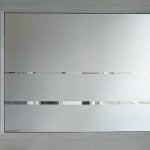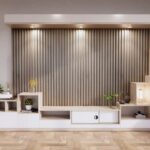Wood scrolling is a beautiful and intricate way to add elegance and charm to the exterior of your home. This decorative technique, which involves the use of carved or cut wood to create intricate designs, can transform the look of any house and make it truly stand out. In this article, we will explore how to decorate the exterior of your home with wood scrolling, from choosing the right wood type to showcasing design inspiration and providing maintenance tips.
When it comes to choosing the right type of wood for scrolling, durability is key. Different types of wood offer varying levels of resistance to weathering and insect damage, so it’s important to select a species that can withstand outdoor conditions. From classic cedar to durable redwood, each type has its own unique characteristics that make them suitable for scrolling projects.
Design inspiration plays a crucial role in incorporating wood scrolling into the exterior of your home. Whether you prefer a traditional style with intricate patterns or a more modern look with clean lines, there are endless possibilities for creating stunning designs with wood scrolling. From ornate trim work around windows and doors to intricate accents on porch railings, wood scrolling can add a touch of sophistication and luxury to any home facade.
Choosing the Right Wood Type
When it comes to choosing the right wood type for decorating the exterior of your home with wood scrolling, there are several factors to consider. The durability and quality of the wood will play a significant role in how well it will hold up against the elements. Some of the most popular wood types for scrolling include cedar, redwood, and mahogany.
Cedar
Cedar is a popular choice for wood scrolling due to its natural resistance to rot and decay. Its fragrant aroma and rich color make it a beautiful option for adding warmth and character to the exterior of a home. Cedar is also lightweight, making it easier to work with when creating intricate scrolling designs.
Redwood
Redwood is another excellent choice for wood scrolling, known for its rich reddish-brown hue and natural resistance to insects and decay. Redwood is a durable and long-lasting option that can withstand exposure to moisture and harsh weather conditions, making it ideal for outdoor applications such as scrollwork on the exterior of homes.
Mahogany
Mahogany is a luxurious wood choice for scrolling that offers a rich, deep color and fine grain pattern. While mahogany is more expensive than cedar or redwood, its beauty and durability make it a worthwhile investment for enhancing the exterior of your home with ornate scrollwork. Mahogany is prized for its stability and resistance to warping, making it an excellent choice for intricate designs that require precision and detail.
By carefully selecting the right wood type based on your aesthetic preferences and functional needs, you can create stunning scrollwork that adds charm and elegance to the exterior of your home. Consider factors such as durability, maintenance requirements, and budget when choosing the best wood type for your scrolling project. With the right materials in hand, you’ll be well on your way to transforming your home’s facade into a work of art with beautiful wood scrolling.
Design Inspiration
Wood scrolling can add a touch of elegance and sophistication to the exterior of your home. It provides a unique and intricate design element that can elevate the overall look of your property. Whether you prefer a traditional, rustic, or modern style, there are countless design ideas and styles to inspire you when incorporating wood scrolling into your home’s exterior.
Here are some design inspiration ideas for incorporating wood scrolling into the exterior of your home:
- Classic Fretwork Designs: Add a touch of timeless charm with classic fretwork designs featuring geometric patterns and intricate details.
- French Country Style: Embrace the warmth and charm of French country design by incorporating delicate scrollwork on window shutters, balcony railings, or porch columns.
- Rustic Log Cabin Charm: Create a cozy and inviting atmosphere with rustic log cabin-inspired wood scrolling on gables, eaves, or porch railings.
Whether you choose to add small decorative accents or make a bold statement with larger scrolling elements, the possibilities are endless when it comes to incorporating wood scrolling into the exterior of your home. Be sure to consider the architectural style of your home and personal preferences when selecting a design that complements your overall aesthetic.
When designing with wood scrolling in mind, don’t be afraid to get creative and think outside the box. Experiment with different patterns, sizes, and placements to achieve a personalized look that truly reflects your style. With the right inspiration and vision, you can transform your home’s facade into a work of art that will leave a lasting impression on visitors and passersby alike.
Installation Process
Wood scrolling can add a touch of elegance and charm to the exterior of your home, creating a unique and visually appealing look. In order to achieve this decorative effect, it is important to follow a proper installation process. Here is a step-by-step guide on how to install wood scrolling, along with the necessary tools and techniques required for the job:
1. Measure and Plan: Before you begin installing wood scrolling on your home’s exterior, it is essential to carefully measure the area where you want to place the scrolling. This will help ensure that you have enough material and that the design will fit properly.
2. Prepare the Surface: Make sure that the surface where you will be mounting the wood scrolling is clean, dry, and smooth. Remove any existing paint or debris that could affect the adhesion of the scrolling.
3. Attach the Wood Scrolling: Using a high-quality adhesive suitable for outdoor use, such as construction adhesive or epoxy, carefully apply a thin layer to the back of the wood scrolling. Press the scrolling firmly against the surface and hold it in place until the adhesive sets.
4. Secure with Screws: For added stability and durability, you can also secure the wood scrolling in place with screws. Pre-drill holes in strategic locations along the scrolling and then insert screws to hold it securely against the surface.
By following these steps and using appropriate tools such as a measuring tape, adhesive, screws, drill, and screwdriver, you can successfully install wood scrolling on your home’s exterior to enhance its beauty and character.
Additionally: In order to maintain symmetry or specific patterns when installing wood scrolling on multiple sections of your home’s exterior, consider creating templates or guides for consistent placement across different areas.
Maintenance Tips
Wood scrolling is a beautiful and intricate way to enhance the exterior of your home, but it is important to properly care for and maintain it to ensure longevity. Regular maintenance not only preserves the beauty of wood scrolling but also protects it from damage caused by exposure to weather elements. Here are some essential maintenance tips to help you keep your wood scrolling looking its best for years to come.
Cleaning and Dusting
One of the simplest ways to maintain wood scrolling is by regularly cleaning and dusting it. Use a soft brush or cloth to gently remove dust and dirt buildup from the surface of the wood. Avoid using harsh chemicals or abrasive tools that could damage the finish or texture of the scrolling. For more thorough cleaning, you can use a mild soap solution and water, followed by a rinse with clean water and gentle drying.
Inspecting for Damage
Regularly inspecting your wood scrolling for any signs of damage is crucial in maintaining its integrity. Look for any cracks, splits, or warping in the wood that may have occurred over time. Addressing these issues promptly can prevent further damage and extend the lifespan of your scrolling. If you notice any significant damage, consider consulting a professional for repairs or replacements.
Applying Protective Coatings
To protect your wood scrolling from moisture, sunlight, and other environmental factors, consider applying protective coatings such as varnish or sealant. These coatings help seal the wood surface and prevent water penetration, reducing the risk of rotting or warping.
Make sure to follow manufacturer instructions when applying coatings and reapply as needed based on wear and exposure to outdoor conditions. By taking these maintenance tips into consideration, you can enjoy the beauty of wood scrolling on your home’s exterior for years to come.
Weatherproofing
One of the most common methods for weatherproofing wood scrolling is applying a protective sealant or finish. This sealant acts as a barrier against moisture penetration and helps to prevent rotting or warping of the wood.
It also provides UV protection to prevent sun damage and fading of the wood’s natural color. Before applying any sealant, it is important to properly clean and prepare the surface of the wood scrolling to ensure maximum adhesion and effectiveness of the weatherproofing treatment.
In addition to sealants, another effective way to weatherproof wood scrolling is by using natural oils such as linseed oil or tung oil. These oils penetrate deep into the wood fibers, providing long-lasting protection against moisture while enhancing the natural beauty of the wood grain.
Regular reapplication of these oils may be necessary to maintain optimal protection against harsh weather conditions. By taking proper care to weatherproof your wood scrolling, you can enjoy its aesthetic appeal for years to come while protecting it from environmental damage.
Benefits of Wood Scrolling
Wood scrolling is a versatile and timeless design element that can bring a touch of elegance and character to the exterior of your home. Whether used as decorative trim, accents on shutters, or intricate panels on porches, wood scrolling adds a unique charm and sophistication to any architectural style. One of the main benefits of using wood scrolling in home exterior decoration is the ability to customize and personalize the look of your property.
When considering how to decorate the exterior of your home with wood scrolling, it is essential to choose the right type of wood that can withstand outdoor elements and provide durability. Cedar, redwood, and teak are popular choices for their natural resistance to decay and insects, making them ideal for outdoor applications. Additionally, hardwoods like oak and mahogany offer a rich appearance and sturdiness that can enhance the beauty of wood scrolling designs.
Incorporating wood scrolling into your home’s exterior design not only enhances its aesthetic appeal but also adds practical benefits. From increasing curb appeal and property value to adding a layer of protection against harsh weather conditions, wood scrolling serves both decorative and functional purposes. By carefully selecting the design, type of wood, and installation process, you can create a striking visual impact that transforms your home into a welcoming sanctuary with a touch of craftsmanship.
Case Studies
Wood scrolling is a timeless and elegant way to decorate the exterior of your home, adding a touch of sophistication and charm. By incorporating intricate wood scrolling into various aspects of your home’s design, you can create a unique aesthetic that sets your property apart. So, how to decorate the exterior of home with wood scrolling? Let’s explore some real-life examples of homes that have successfully integrated this beautiful element into their design.
One popular way to incorporate wood scrolling into the exterior of a home is by adding it to the front porch or entrance. By framing the doorway with delicate wood scrolling details, you can create a welcoming and eye-catching entryway that leaves a lasting impression on guests. Additionally, using wood scrolling on porch railings or balusters can add character and flair to your home’s façade.
Another creative way to utilize wood scrolling in exterior design is by incorporating it into window shutters or gables. By adding decorative wood scrolling accents to these areas, you can enhance the overall curb appeal of your home while infusing it with a touch of traditional elegance. Whether you opt for bold and intricate designs or more subtle accents, wood scrolling is sure to elevate the look of your home’s exterior.
Conclusion
In conclusion, decorating the exterior of a home with wood scrolling offers a unique and timeless charm that adds character and elegance to any property. The careful selection of the right wood type, meticulous design inspiration, and expert installation process are crucial steps in achieving a stunning look that enhances the overall aesthetic appeal of your home. By following maintenance tips and properly weatherproofing the wood scrolling, you can ensure its longevity and durability against the elements.
The benefits of using wood scrolling in home exterior decoration go beyond aesthetics; they also provide practical advantages such as increasing curb appeal, adding value to your property, and creating a warm and inviting atmosphere for both residents and visitors. By incorporating wood scrolling into your exterior design, you are making a statement that reflects your attention to detail and appreciation for quality craftsmanship.
Whether you draw inspiration from traditional or modern design styles, there is no limit to the creativity that can be expressed through wood scrolling. By exploring different design ideas and taking cues from real-life case studies, you can find the perfect balance between beauty and functionality in transforming the exterior of your home into a true work of art. Embrace the beauty of wood scrolling and elevate the look of your home with this classic yet versatile decorative element.
Frequently Asked Questions
How Can I Make the Outside of My House Look Nice?
There are several ways to make the outside of your house look nice. One effective method is to keep the exterior clean and well-maintained, such as regularly washing the walls and windows. Adding greenery through landscaping can also enhance the overall appearance of your home.
How to Decorate the Exterior?
When it comes to decorating the exterior of your house, consider adding decorative elements that reflect your personal style and complement the architectural features of your home. This could include hanging plants, outdoor lighting fixtures, or a welcoming front door design. Designing a visually appealing entrance can also make a big impact.
What Exterior Colors Make a House Look Expensive?
Certain exterior colors can give off an expensive and elegant vibe for a house. Neutral colors like white, beige, gray, and taupe are often associated with luxury homes because they provide a sophisticated and timeless look. Richer colors like navy blue or dark charcoal can also add depth and richness to the exterior, making it appear more upscale.

I’m thrilled to be your companion on this exciting journey through the world of home decor and design. With a passion for turning houses into homes and a keen eye for the finer details, I’m here to help you transform your living spaces into beautiful, functional, and meaningful havens.





